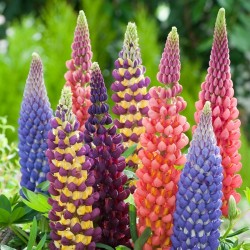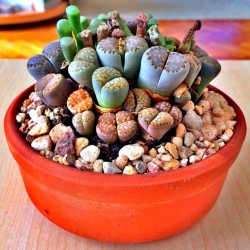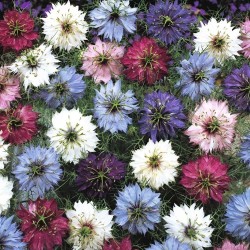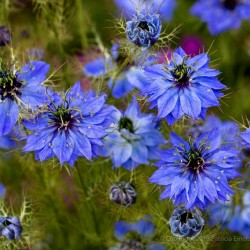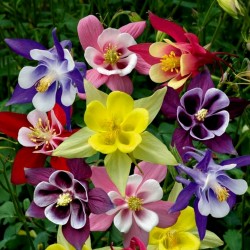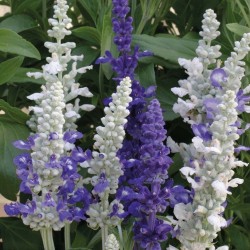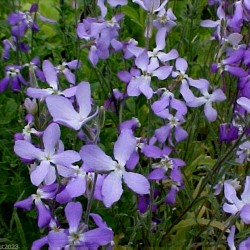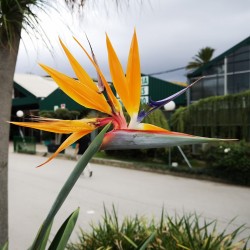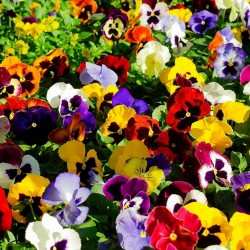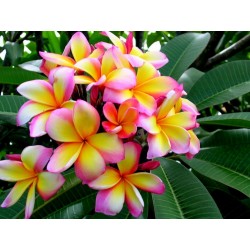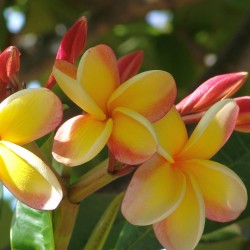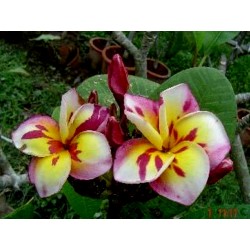Seeds Gallery Com,
5/
5
<!DOCTYPE html>
<html>
<head>
<meta http-equiv="Content-Type" content="text/html; charset=UTF-8" />
</head>
<body>
<h2><strong>Semena Strelície královská (Strelitzia reginae)</strong></h2>
<h2><span style="color: #ff0000;"><strong>Cena za balení 3 semen.</strong></span></h2>
<p><b>Strelície královská</b><span> </span>(<i>Strelitzia reginae</i>) je<span> </span>tropická<span> </span>rostlina s exotickým, ptáku podobným<span> </span>květem. Je jedním z pěti<span> </span>druhů<span> </span>rodu<span> </span>strelície<span> </span>a pochází z Jihoafrické republiky, kde v přírodě roste ve východních<span> </span>provinciích<span> </span>Východní Kapsko<span> </span>a<span> </span>KwaZulu-Natal. Do<span> </span>londýnské<span> </span>Královské botanické zahrady<span> </span>krále Jiřího III.<span> </span>se dostala roku 1773 a pro svůj neobvyklý, okouzlující vzhled dostala jméno po králově manželce<span> </span>Sophie Charlotte von Mecklenburg-Strelitz. Od té doby se rozšířila téměř do všech světadílů, kde se pěstuje jako pokojová nebo skleníková rostlina a v teplejších oblastech se vysazuje v zahradách a parcích.<sup id="cite_ref-botany_1-0" class="reference"></sup><sup id="cite_ref-andrew_2-0" class="reference"></sup><sup id="cite_ref-grin_3-0" class="reference"></sup></p>
<h2><span class="mw-headline" id="Ekologie">Ekologie</span></h2>
<p>Rostliny potřebují propustnou, hodně výživnou půdu a dostatek světla. Minimální teplota ve které ještě rostou je +10 °C. Ve své domovině se obvykle vyskytují podél břehů vodních toků na plném slunci, méně často v polostínu pobřežních křovin a houštin. Na vlhkých stanovištích kde půda obsahuje dostatek humusu, vytvářejí široké shluky rostlin, které při dostatku tepla, vláhy a živin spolehlivě vykvétají v zimě a na jaře.<sup id="cite_ref-andrew_2-1" class="reference">[2]</sup><sup id="cite_ref-africa_4-0" class="reference">[4]</sup></p>
<h2><span class="mw-headline" id="Popis">Popis</span></h2>
<div class="thumb tleft">
<div class="thumbinner"><img alt="Semena Strelície královská (Strelitzia reginae)" src="https://upload.wikimedia.org/wikipedia/commons/thumb/4/46/Strelitzia_reginae_SouthAfrica.jpg/220px-Strelitzia_reginae_SouthAfrica.jpg" decoding="async" width="220" height="167" class="thumbimage" srcset="//upload.wikimedia.org/wikipedia/commons/thumb/4/46/Strelitzia_reginae_SouthAfrica.jpg/330px-Strelitzia_reginae_SouthAfrica.jpg 1.5x, //upload.wikimedia.org/wikipedia/commons/thumb/4/46/Strelitzia_reginae_SouthAfrica.jpg/440px-Strelitzia_reginae_SouthAfrica.jpg 2x" data-file-width="3391" data-file-height="2575" title="Semena Strelície královská (Strelitzia reginae)" />
<div class="thumbcaption">
<div class="magnify"></div>
Květ strelície královské</div>
</div>
</div>
<p>Je to<span> </span>jednoděložná,<span> </span>vytrvalá,<span> </span>trsnatá, stálezelená<span> </span>bylina<span> </span>vysoká až 200 cm. Má shluk tlustých<span> </span>oddenků, ze kterých vyrůstají střídavé<span> </span>listy<span> </span>s pochvami a<span> </span>řapíky<span> </span>až 120 cm dlouhými. Tmavě zelené, protáhle oválné<span> </span>listové čepele<span> </span>bývají velké až 50 × 10 cm, jsou lysé, celokrajné a mají silnou střední<span> </span>žilku.</p>
<p>Květní<span> </span>stvol<span> </span>vyzvedává až nad listy<span> </span>květenství<span> </span>s jedním až šesti nepravidelnými,<span> </span>oboupohlavnými<span> </span>květy<span> </span>s vodorovně postaveným tuhým, kožovitým<span> </span>listenem<span> </span>člunkovitého tvaru (někdy nazývaným zobák nebo<span> </span>toulec). Listen je dlouhý až 20 cm a květy se z něj postupně vztyčují. Každý květ má tři velké oranžové<span> </span>kališní<span> </span>a tři modré<span> </span>korunní<span> </span>plátky, z nichž dva jsou spojené do modrého hrotu a obklopují pět<span> </span>tyčinek<span> </span>a<span> </span>bliznu<span> </span>na dlouhé<span> </span>čnělce. Květy produkují velké množství<span> </span>nektaru, za kterým přilétají hlavně včely nebo ptáci z čeledi<span> </span>strdimilovitých, kteří přistávají na listenu. Ptáci nektar rádi sají, ale na vlastním<span> </span>opylení<span> </span>se podílejí málo,<span> </span>pyl<span> </span>se jim při pití vysypává na nohy.</p>
<p>Plody<span> </span>jsou tvrdé, dřevnaté, trojpouzdré<span> </span>tobolky. Obsahující mnohá kulatá, černohnědá<span> </span>semena<span> </span>s oranžovým<span> </span>míškem. Rostliny se v přírodě rozrůstají oddenky a na větší vzdálenosti jejich semena roznášejí ptáci požírající plody. Uměle mohou být množeny rozdělováním velkých<span> </span>trsů<span> </span>nebo vyséváním pomalu<span> </span>klíčících<span> </span>semen, která se obvykle získávají ručním opylováním. Mladé<span> </span>semenáče<span> </span>rostou velmi pomalu a prvně kvetou za tři až pět let a rostliny vyrostlé ze semen nemusí mít<span> </span>vyšlechtěné<span> </span>vlastnosti rodičovských rostlin.<sup id="cite_ref-botany_1-1" class="reference">[1]</sup><sup id="cite_ref-andrew_2-2" class="reference">[2]</sup><sup id="cite_ref-africa_4-1" class="reference">[4]</sup><sup id="cite_ref-flor_5-0" class="reference">[5]</sup></p>
<h2><span id="V.C3.BDznam"></span><span class="mw-headline" id="Význam">Význam</span></h2>
<p>Strelície královská je rostlinou s exotickými květy, která je v teplém podnebí poměrně nenáročná, odolná proti škůdcům a vyniká dlouhou životnosti květů používaných jako<span> </span>řezané květiny<span> </span>do váz. Ve<span> </span>středoevropských<span> </span>podmínkách je rostlinou pěstovanou ve vytápěných sklenících a zimních zahradách. V teplejších oblastech se používá jako nápadný architektonický prvek v zahradách a parcích. Specializované zahradnické podniky stále šlechtí nové<span> </span>variety<span> </span>s jinak zbarvenými a tvarovanými květy i s rozdílnou vzrůstnosti rostlin. Domorodí obyvatelé používají odvary z květů k léčbě zánětů žláz i pohlavních nemocí.</p>
<h2>Sowing: </h2>
<p>Sow indoors at any time of year.</p>
<p>Before sowing, remove the bright orange tuft of hairs attached to the seed (aril of each seed), the hard seeds can be scarified (nicked or scratched) to decrease germinate. To scarify, soak the seeds in lukewarm water for several hours, and then nick them with a knife or small file. Scarified seeds will germinate in two to three months.</p>
<p>Another way to decrease germination time is to put un-scarified seeds in a plastic bag and place them in a refrigerator at 4°C (40°F) for two weeks. Then scarify and sow them.</p>
<p>Sow in seed trays filled with a well-drained soil medium at a depth of 1.25cm (½”)</p>
<p>Keep at a constant temperature of 25°C (77°F) low temperatures retard germination. Germination takes four to eight weeks.</p>
<p>The soil mix must be kept consistently damp until the seeds germinate. To ensure a moist, humid environment, cover the seed container with a sheet of glass or clear plastic and place it in indirect light.</p>
<p>Seedlings should be a good size before transplanted (two to three leaves) into a well-drained medium. Young strelitzia plants must be grown in shade, for the leaves tend to burn in direct sunlight. Regular repotting allows the young plant to develop rapidly. Restricting the root development of retards growth.</p>
<h3>Cultivation: </h3>
<p>Strelitzia nicolai is an easy plant to grow in the garden. Plants do well in full sun to semi-shade, love rich loamy soil and plenty of water throughout the year. They respond well to regular feeding with a slow-release fertilizer and compost. They are very tolerant plants and will thrive in most soils and can survive with very little water once established. They are also wind resistant and grow well in coastal gardens.</p>
<p>Strelitzias are sensitive to cold and in areas with frosts would need a sheltered position. In cold climates, it is better to grow them in pots that could be moved indoors when frosts are expected. As soon as the frosts finish for the winter, you may place the plant outside in a sheltered south-facing the garden. They tend to do well when temperatures do not drop below 10°C (50°F) and do very well in a greenhouse/conservatory.</p>
<h3>Tips for growing strelitzia in a temperate climate: </h3>
<p>Overwintering - One of the main points with exotic plants is to avoid frost. Keep in a warm, well-lit area. Stop feeding the plants to allow them to become dormant. Do not overwater in the dormant season/winter. Wet soil is cold soil.</p>
<p>Springtime: - Feed the plant well once growth starts again. Feed regularly throughout the growing season but do not over-feed otherwise your plants will just grow foliage and no flowers.</p>
<h3>Flowering: </h3>
<p>From seed, plants given ideal conditions will flower within 3 years. To get a mature flowering plant from seed takes about three to five years.</p>
<p>They usually start to come into flower at Christmas time and sometimes later in the summer months. The flower spikes take a few months to grow full size, but then open gradually, taking a few weeks, to a few months to open up to reveal their famous flowers</p>
<h3>Watering: </h3>
<p>The bird of paradise plant should be watered thoroughly but then allowed to dry out almost completely before re-watering. They don’t like to be over-watered, and in the rest period (winter) they should only be watered when the soil is almost completely bone dry. When growing begins in the Spring they should be given phostrogen feed once every two weeks, to encourage new growth.</p>
<h3>Feeding: </h3>
<p>During the summer months, Strelitzia requires as much sunlight and ventilation as possible. Feed once a week with a phostrogen feed to help encourage new leaves and flower spikes.</p>
<h3>Potting: </h3>
<p>As soon as the roots start to stretch the pot wider, it would then be wise to pot the plant up into the next size pot. They tend to do very well in a loam-based compost with either grit or bark chippings to aid drainage. The optimum pH is 6.5.</p>
</body>
</html>
F 1




